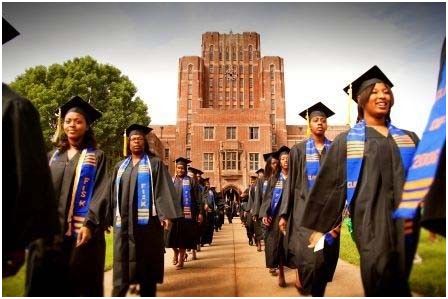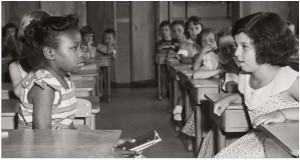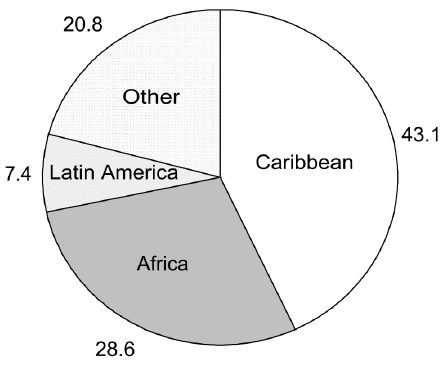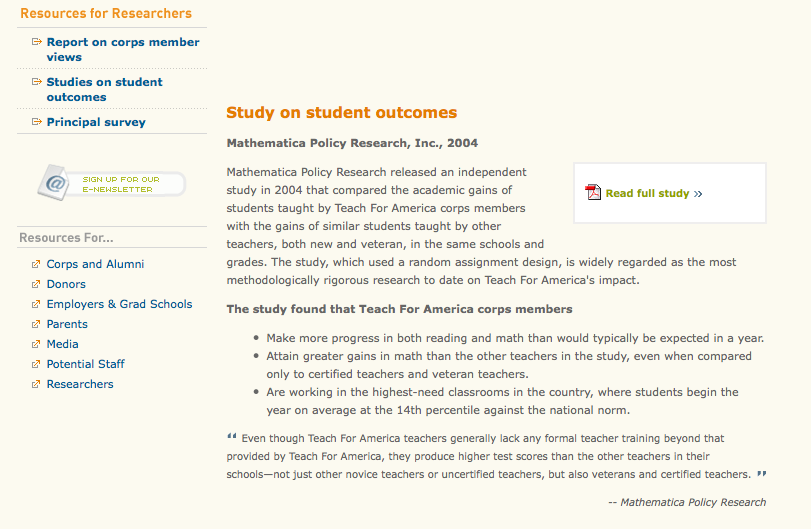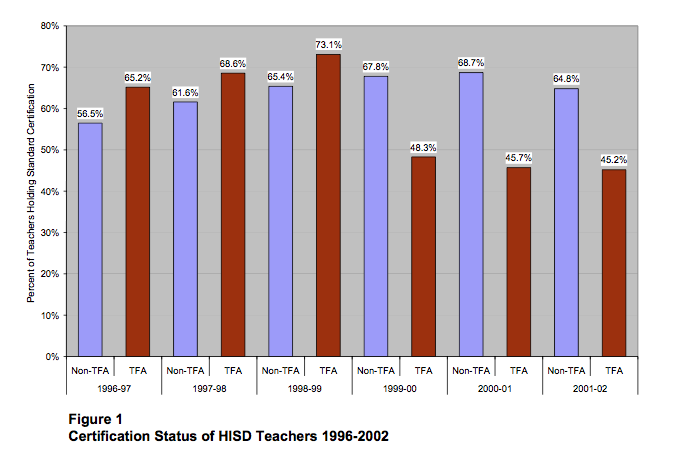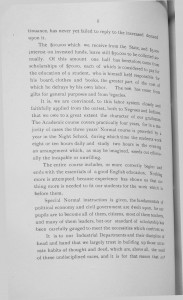To most educators, the essential element to the success of their mission is academic integrity. It can be said that higher education as well as society will benefit from standards of integrity that pave the way for vibrant academic life, promote scientific progress, and prepare students for responsible citizenship. Despite efforts to uphold such principles, academic dishonesty is a growing concern for most educational institutions. Academic dishonesty has been a problem in schools as long as schools have existed, but over the past decade researchers and teachers have reported a dramatic climb in the occurrence of academic dishonesty especially among students in higher education, seemingly sparked by the rise of the Internet. Although increased technological developments of the last twenty or so years have been critical in creating new aids in research and avenues for faculty to publish their works, the Internet has made it easier for students to plagiarize, fabricate, and tamper with information. Another important factor that can be considered is student confusion over the nature of originality and textual appropriation when it comes to using online resources. Because many students do not know exactly what constitutes cheating and plagiarism through the use of the Internet, it is becoming increasingly more common and acceptable among students to use sources found on the Internet in some way that is not in accordance with higher education institutions. With this, can it be proven that the growth of academic dishonesty been facilitated by the Internet and have the methods in which academic dishonesty is employed changed since is widespread prevalence?
What is Academic Dishonesty?
Academic Dishonesty, “includes ‘cheating,’ ‘fraud,’ and ‘plagiarism,’ the theft of ideas and other forms of intellectual property-whether they are published or not. (). This practice is commonly believe by many to endanger the quality of education and depreciate the authentic achievements of others. There are many different forms of academic dishonesty including plagiarism, cheating, fabrication and falsification, multiple submissions, misuse of academic materials, and complicity in academic dishonesty. Plagiarism is the use of another person’s distinct ideas or words without acknowledgment. On the other hand, cheating involves the possession, communication, or use of any type of information not authorized by the instructor. Fabrication and falsification means to invent or counterfeit information by creating your own results or deliberately altering information in any academic exercise. Another form of academic dishonesty that is often overlooked is that of multiple submissions, meaning submitting academic work for which academic credit has already been earned. Misuse of academic materials includes stealing, destroying, or unauthorized possession/alteration/sale/purchase of any academic materials. Lastly, complicity in academic dishonesty, sometimes overlooked, entails knowingly contributing to another’s acts of academic dishonesty ().
Growth of Academic Dishonesty
The Internet has revolutionized the computer and world of communications like nothing ever before. The invention of the telegraph, telephone, radio and computer, set the stage for the unprecedented integration of capabilities that later arose with the invention of the Internet. It is generally agreed upon that the Internet reached public consciousness in the United States in the mid to late 1990s and with this later came the growth of academic dishonesty. Here are some studies and cases about academic dishonesty that lead to insight about its relation to the Internet:
In a study, “The Impact of Unethical Reasoning On Different Types of Academic Dishonesty: An Exploratory Study,” the authors argue that there is an increase in academic dishonesty in the education system, which is concerning because it is suggested that those who cheat in college are more likely to cheat on the job. The idea that it is likely that students who cheat in academics are more likely to cheat in the business world coupled with the thought that academic dishonesty is on the rise, is problematic for it would seem to create an increasingly corrupt society. This is one of the reasons professors and academic institutions are concerned about this growing problem (Iyer 2008).
“A Campus Fad That’s Being Copied: Internet Plagarism,” is an article about how a study conducted in 2004 on 23 college campuses has found that Internet plagiarism is rising among students. Out of the undergraduate students surveyed said that in the last year they had engaged in some sort of Internet plagiarism without citation. In a similar survey three years earlier than this study, only 10 percent of students had acknowledged such cheating. This study in 2004, by Donald L. McCabe from Rutgers University, surveyed over 18,000 students, 2,6000 faculty members and 650 teaching assistants at large public universities and small private colleges nationwide, not including Ivy Leagues. Professor McCabe says, “There are a lot of students who are growing up with the Internet who are convinced that anything you find on the Internet is public knowledge and doesn’t need to be cited.” This studied revealed that about half the students who participated in the study considered Internet cheating to be trivial plagiarism while only twenty-two percent of undergraduates acknowledged that they have cheated in a “serious” way in the past year. According to the majority opinion of students, the more serious way of cheating is copying from another student on a test, using unauthorized notes or helping someone else to cheat on a test. Most students believe that cheating and plagiarism through the use of the Internet is less serious and therefore students are more likely to partake in this sort of plagiarism. The article also adds that administrators at Princeton have said that many times students as well as parents do not understand why it is wrong to using sections of text for academic word without using citation. The author ends by saying that colleges need to make it clear to their students what defines cheating and that is important to uphold principles of academic integrity in order to stop the growth of academic dishonesty within educational institutions (Rimer 2003).
In the article “Student Online Plagiarism: How Do We Respond?” the author talks about how it has been perceived that Internet plagiarism by college students is on the rise and that professors and administrators are alarmed. It reviews quantitative studies of student plagiarism over the past forty years, as well as how institutions have responded weakly. Lastly it offers strategies for addressing and preventing such plagiarism. The author reveals that quantitative studies based on student self-reports have reported high levels of academic dishonesty over several decades, but vary from 9 to 95 percent of students admitting to some form of academic dishonesty. It is found that Internet plagiarism is highly influenced by peer behavior on students’ decisions to plagiarize and that it is on the rise among high school students. Because of this, it is now even more critical how colleges respond to such dishonesty. In the past, cheating and plagiarism was more time consuming, as it required students to obtain books, read, and copy. Now students can find online resources in a matter of seconds, with just the click of a mouse, which has led to the growth of academic dishonesty (Scanlon 2003).
In the literature review of the study, “It’s Wrong, But Everybody Does it: Academic Dishonesty among High School and College Students,” it is suggested that cheating has increased over the course of the past several decades. “In 1941, Drake found that 23% of college students reported cheating. Goldsen (1960) reported rates of 38% in 1952 and 49% in 1960. By the 1980s, Jendrek (1989) estimated the typical rate between 40 and 60%. By 1992, she found that 74% of college students engaged in cheating (Jendrek, 1992). Even more recently, researchers have reported rates as high as 90% (Graham, Monday, O’Brien, and Steffen, 1994). These rates pertain to college students” This study gives evidence that academic dishonesty has increased since the Internet has become mainstream and continues to become more widely used.
Here are studies and reports of academic dishonesty from 1915-2010:
Methods of Academic Dishonesty through use of the Internet
Although it is commonly accepted that the Internet in general is an easily accessed source in which students take unfair advantage in academia, there are many different ways students obtain information on the web. In an analytical study on where students find unoriginal content on the Internet, “Plagiarism and the Web: Myths and Realities,” close to 40 million college student papers were examined to obtain a glimpse into the resources students use over the Internet. These papers were submitted to Turnitin, which is the leading plagiarism prevention and wiring application for instructors. The results reveal that there were about five different resource categories that students used when it came to plagiarism, although it was reported that some were used more often than others. These five categories are as follows: Social networking and content sharing, homework and academic, news and portals, paper mill and cheat sites, encyclopedias (White Paper).
Social networking and content sharing are sites that rely on user-generate content rather than published professional content. These social networking sites include sites such as Facebook, MySpace, and question and answers on Yahoo Answers and Answers.com. The homework and academic category encompasses websites that are established to help students prepare for tests or give aid in some educational or academic aspect. Most of these sites have .org or .gov domain registrations, but also includes sites such as www.bookrags .com and www.sparknotes.com. News and portals include sites that have a traditional published model, such as the New York Times, and the Huffington Post. Sites that profit from students selling and exchanging original student papers are called paper mills or cheat sites. Lastly, encyclopedia web sites are classified into their own category because of its vast and growing popularity, including Brittanica.com and Encyclopedia.com and Wikipedia (White Paper).
The results of the study show that plagiarism is going social. One-third of all content matched in the study is from social networks or other question-and-answer sites where users contribute and share information over the web. One-quarter of all matched material is from educational web sites, which is more than double the number coming from paper mills or cheat sites. This means that educational sites are a more popular way students tend to plagiarize, although paper mills and cheat sites are the third most popular category for matched content. With 7 percent of matches, Wikipedia remains the most popular single source for student-matched content. This study also argues that educators who employ the proper tools and technologies can minimize plagiarism. The authors present this argument by giving statistics that institutions with widespread adoption of Turnitin experience a reduction in unoriginal content of 30 to 35 percent in the first year. By the fourth year, many see levels of unoriginality fall up to 70 percent. (White Paper).
Discussion:
With the increasing prevalence of the Internet and advancing technology, students have become more creative and discrete in how they go about cheating. The old standards of cheating, prior to the invention of the Internet, often involved looking over a classmates shoulder during a test, copying homework from another student, or bullying someone into writing a paper. The Internet itself has become a breeding ground for plagiarism as students often just copy and paste information and declare it as their own words and ideas. Although there are many studies and reports that have given evidence that academic dishonesty is on the rise, it cannot be fully proven. It is true, however, that the Internet has allowed for different methods of cheating that were impossible before its widespread popularity, but many people are unaware of what constitutes such cheating. It is unclear whether students have significantly dropped their old methods of cheating and replaced them with techniques involving the Internet, although it is pretty well known that both methods are still in considerable practice. With the rise of the Internet, it has also become easier for professors and educational institutions to detect academic dishonesty, such as plagiarism, from Internet sources through the use of devices that are able to detect unoriginality. It is only until recent years that universities and other academic institutions have been keeping records of academic dishonesty cases. When starting my research project I originally wanted to find out if academic dishonesty has increased at Trinity College since the 1980s, but I found that I was unable to do so. I spoke to Peter Knapp to see if there were any files on such cases in the Watkinson Library, but he told me that there was no pertinent material in the Archives. He told me that the best place for me to go would be the Dean of Students’ Office for this information, but when I told Dean Reuman about my research she told me that there is only data from the last 7 years. Because of this I found it to be impossible to complete my research on this specific matter. It may be that there is a rise in concern over academic dishonesty in recent years and more honor councils are being established to punish cheating and promote academic integrity.
Here are studies and reports of academic dishonesty from 1915-2010:
Works Cited
Rimer, Sara. 2003. “A Campus Fad That’s Being Copied: Internet Plagiarism.” New York Times, 3 Sept. nytimes.com/2003/09/03/education/03CHEA.html
Scanlon, PM (2003) “Student Online Plagiarism: How Do We Respond?” College Teaching, 51: 161-5. Schon, D. (1983) The Reflective Practitioner. New York: Basic Books.
Iyer R, Eastman JK (2008). The impact of unethical reasoning onacademic dishonesty: Exploring the moderating effect of social desirability. Mark. Educ. Rev., 18(2): 21-33.
Jensen, L. A., Arnett, J. J., Feldman, S. S., & Cauffman, E. (2002). It’s wrong, but everybody does it: Academic dishonesty among high school and college students. Contemporary Educational Psychology, 27, 209 –28. 229 –241.
“White Paper – Plagiarism and the Web: Myths and Realities.” Web. 01 May 2012. <http://pages.turnitin.com/PlagiarismandtheWebSEC.html>.
Diekhoff, George M., Emily E. LaBeff, Robert E. Clark, Larry E. Williams, Billy Francis, and Valerie J. Haines. “College Cheating: Ten Years Later.” Research in Higher Education 37.4 (1996): 487-502. Print.
Maramark, S., & Maline, M. B. (1993). Issues in education: Academic dishonesty amongcollege students. Washington,DC: U.S. Department of Education, Office of Educational Research and Improvement.
“An Ethical Dilemma: Talking About Plagiarism and Academic Integrity in the Digital Age More.” An Ethical Dilemma: Talking About Plagiarism and Academic Integrity in the Digital Age (Ebony Elizabeth Thomas). Web. 04 Apr. 2012. <http://wayne.academia.edu/EbonyElizabethThomas/Papers/832016/An_Ethical_Dilemma_Talking_About_Plagiarism_and_Academic_Integrity_in_the_Digital_Age>.



